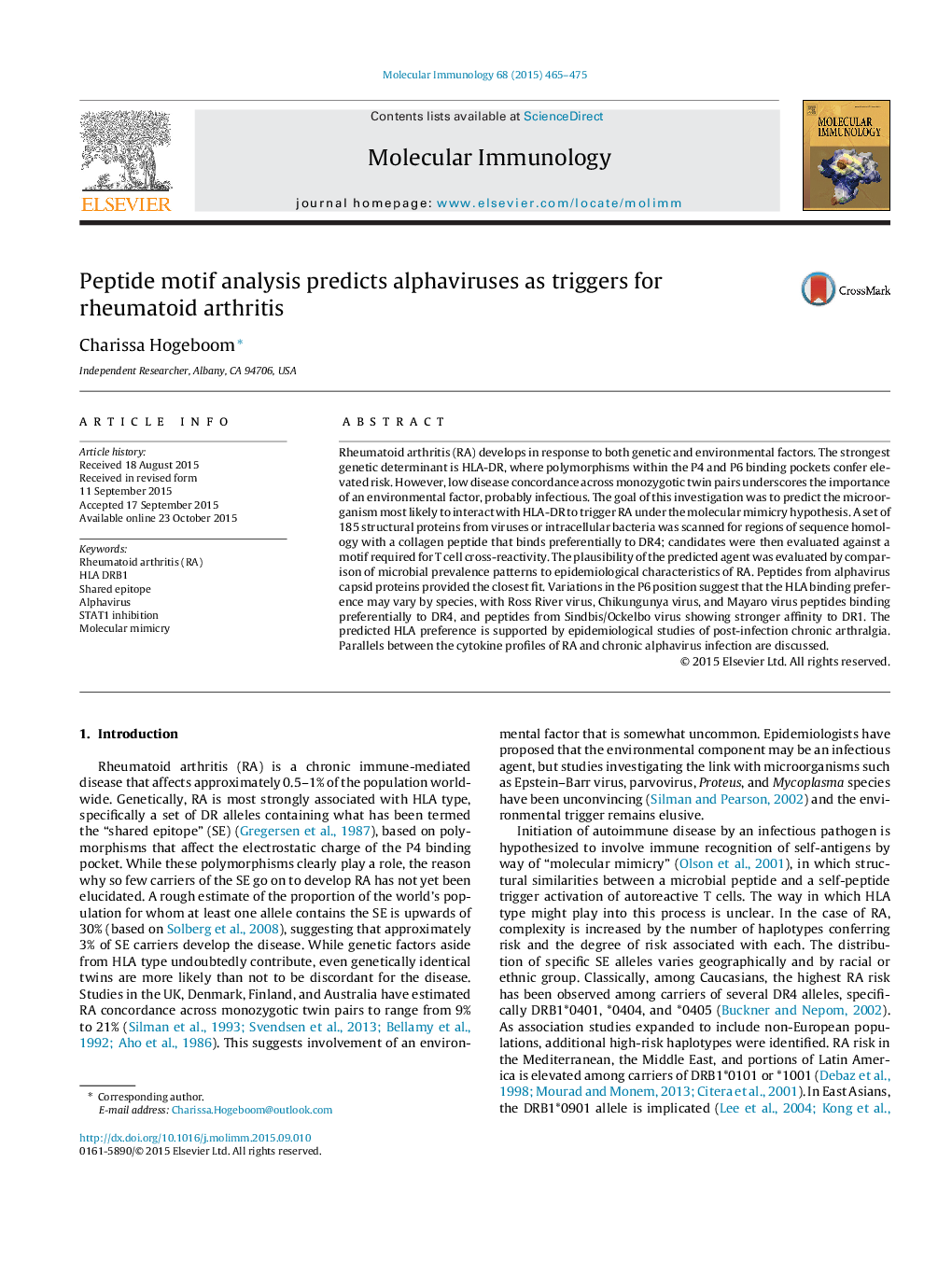| کد مقاله | کد نشریه | سال انتشار | مقاله انگلیسی | نسخه تمام متن |
|---|---|---|---|---|
| 2830584 | 1163741 | 2015 | 11 صفحه PDF | دانلود رایگان |
• Alphavirus capsid peptides provide closest homology match to collagen II.
• Alphavirus prevalence predicts RA after controlling for HLA DR haplotype.
• Alphavirus species differ in the DR allele that provides strongest binding affinity.
• Persistent infection of macrophages may contribute to establish cross-reactivity.
• Virally-induced immune dysregulation may augment molecular mimicry to initiate RA.
Rheumatoid arthritis (RA) develops in response to both genetic and environmental factors. The strongest genetic determinant is HLA-DR, where polymorphisms within the P4 and P6 binding pockets confer elevated risk. However, low disease concordance across monozygotic twin pairs underscores the importance of an environmental factor, probably infectious. The goal of this investigation was to predict the microorganism most likely to interact with HLA-DR to trigger RA under the molecular mimicry hypothesis. A set of 185 structural proteins from viruses or intracellular bacteria was scanned for regions of sequence homology with a collagen peptide that binds preferentially to DR4; candidates were then evaluated against a motif required for T cell cross-reactivity. The plausibility of the predicted agent was evaluated by comparison of microbial prevalence patterns to epidemiological characteristics of RA. Peptides from alphavirus capsid proteins provided the closest fit. Variations in the P6 position suggest that the HLA binding preference may vary by species, with Ross River virus, Chikungunya virus, and Mayaro virus peptides binding preferentially to DR4, and peptides from Sindbis/Ockelbo virus showing stronger affinity to DR1. The predicted HLA preference is supported by epidemiological studies of post-infection chronic arthralgia. Parallels between the cytokine profiles of RA and chronic alphavirus infection are discussed.
Journal: Molecular Immunology - Volume 68, Issue 2, Part B, December 2015, Pages 465–475
